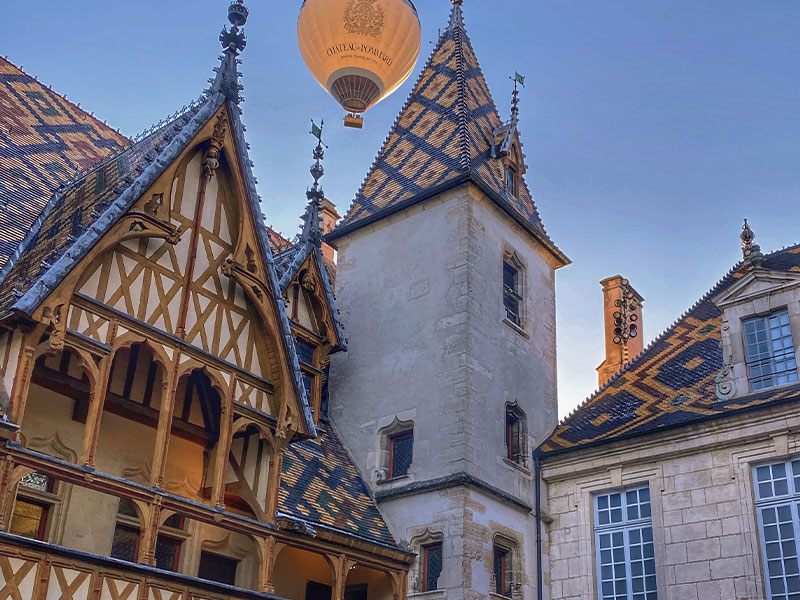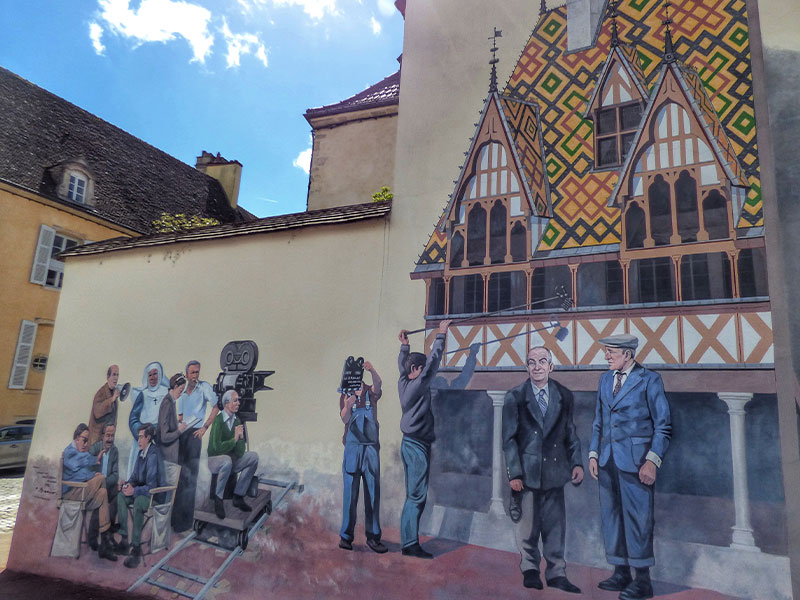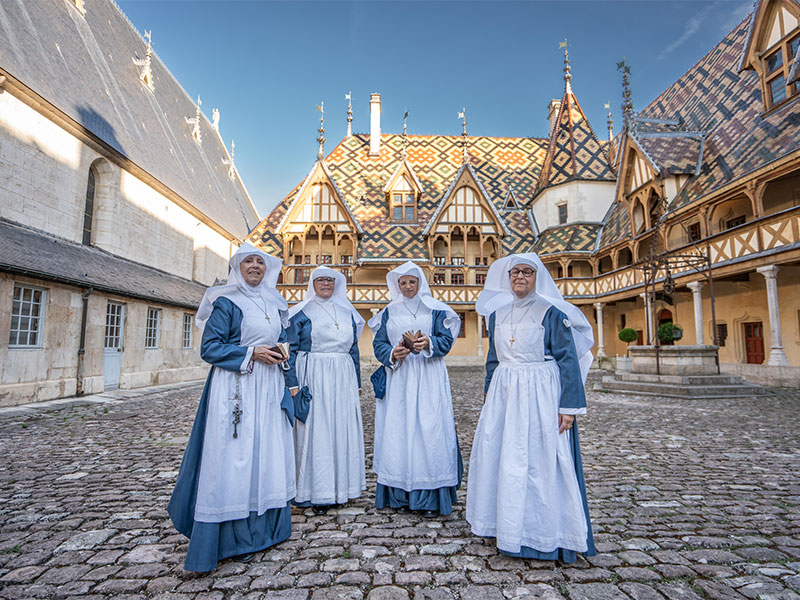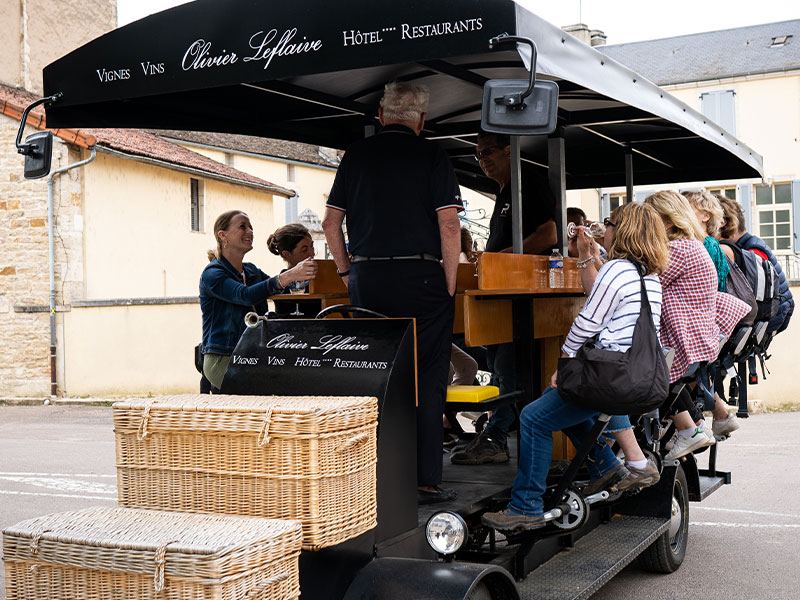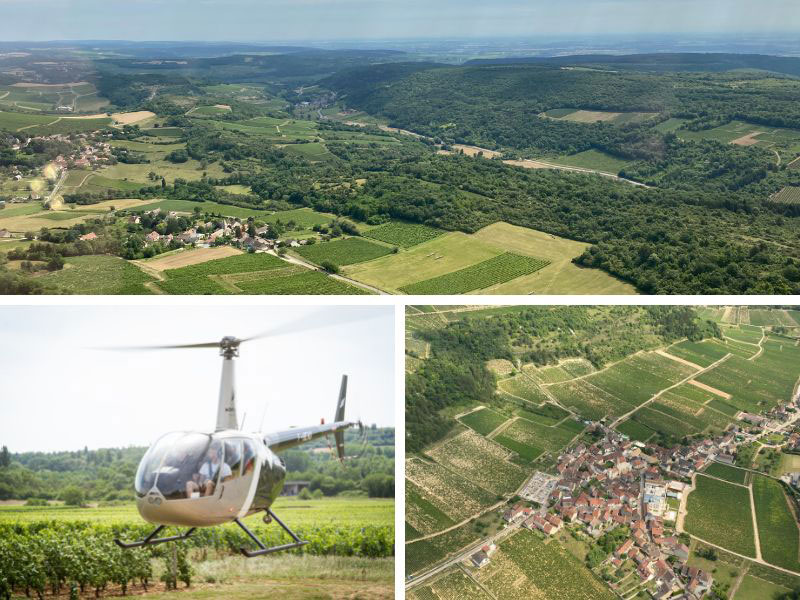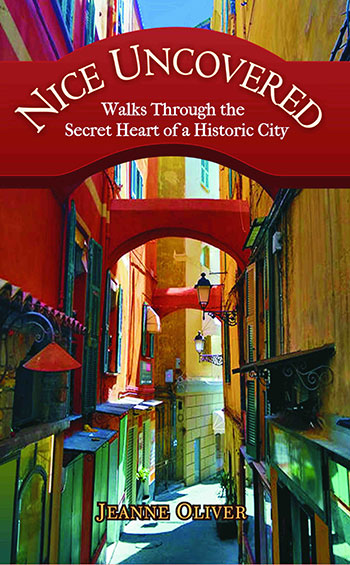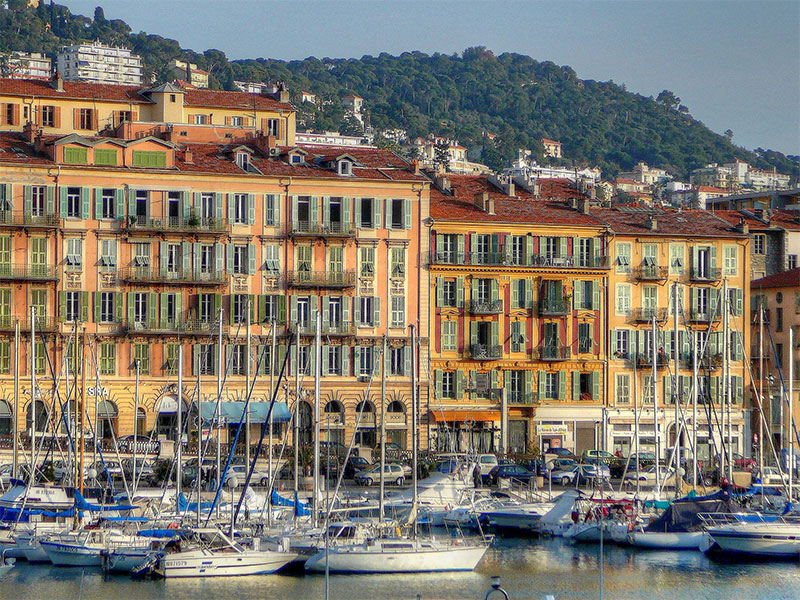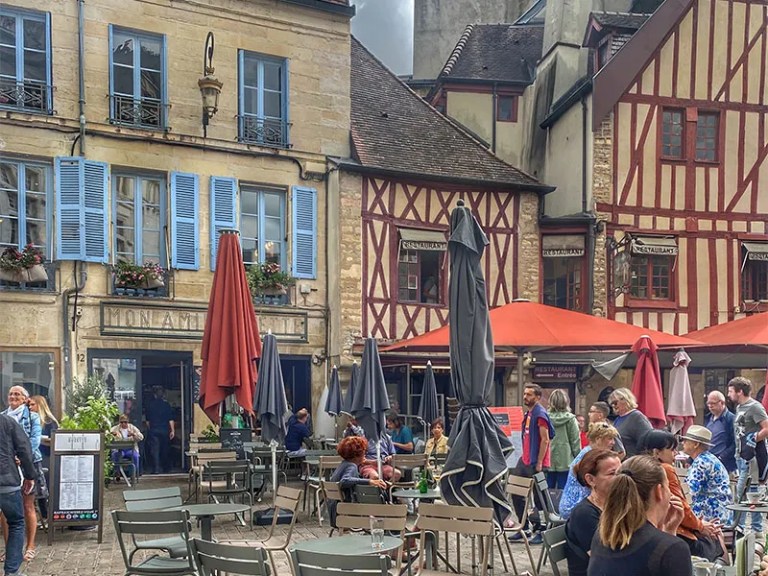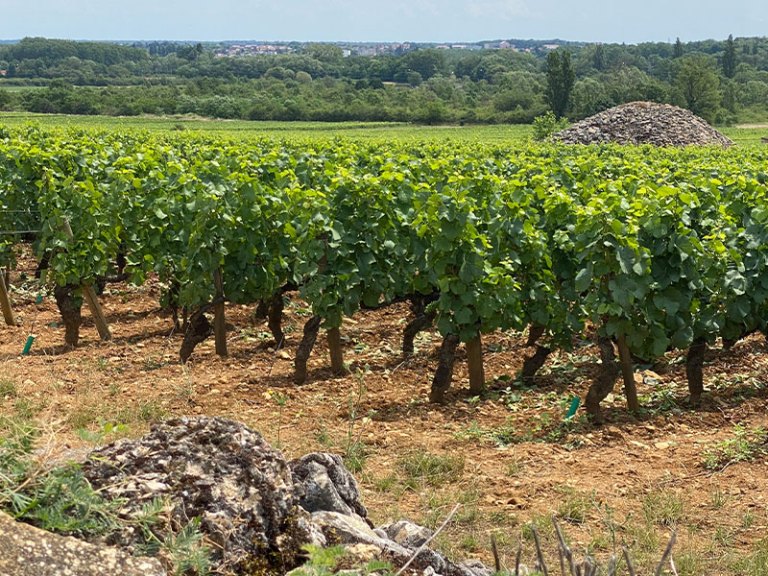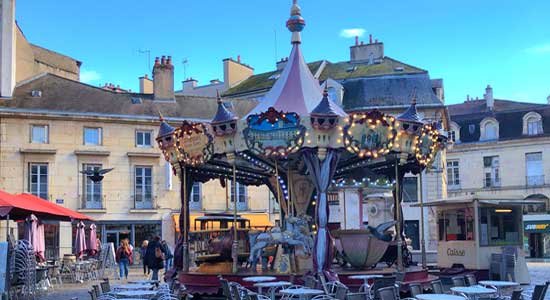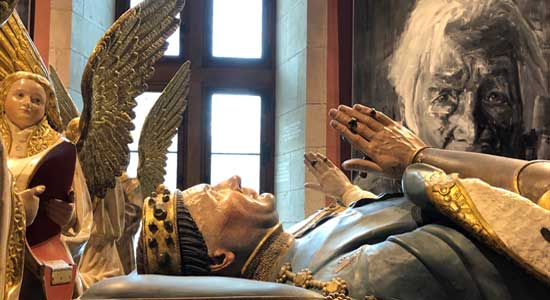Tracing the route of one of the most popular films ever made in France – to Beaune, wine country extraordinaire…
If you’ve ever wondered where the French people go on holiday in France, the simple answer is – all over the country. It’s got such a varied offering, there really is something to suit everyone. I can also tell you that many French people dream of visiting Beaune in Burgundy. For the wine, for the glorious countryside, history and culture and for another reason that is largely unknown outside of France.
Film star Burgundy!
Beaune stars in one of France’s most popular films: La Grande Vadrouille (vadrouille means to gad about or gallivant). It’s a comedy that follows the fortunes of some hapless British Airmen (including the moustachioed English actor Terry Thomas) dropped over Paris by parachute during World War II. They lose their way and are aided by a workman, the conductor of the Paris orchestra and a pretty Parisienne puppeteer. Eventually they escape to Burgundy. There a nun from the famous Hospices de Beaune joins the gang. The film was released in 1966, and it’s said that the entire population of France over the age of 16 have watched it at least once!
Trace the footsteps of the film’s stars in Burgundy’s Côte d’Or department. En route you’ll discover the most authentic, beautiful and delicious parts of Beaune and its surroundings. This is an unspoiled area and just perfect for a road trip. The people are friendly, the food is fabulous and the wine is exquisite. And there are many surprises…
The Petite Vadrouille
I joined a Petite Vadrouille tour which kicked off at the Hospices de Beaune, the famous former hospital for the poor in the heart of the city. Founded in 1443, nursing was provided by nuns called the Hospitalier Soeurs de Beaune. The tour included an exquisite dinner in the King’s Room, originally a bedroom created for Louis XIV. He visited the Hospital in 1658, but didn’t sleep here as intended. Instead he headed to what is now the Hotel le Cep just around the corner.
The “sisters” were there to join the party complete with authentic coifs – their famous wing-like headwear. In the film, it was here in the distinctive ancient hospital beds that the fugitive airmen hid in plain sight. The Hospices looks much as it did 600 years ago. The glittering tiled roof you can only see from the vast courtyard, gargoyles hanging from the historic wooden ceilings, stunning artworks, religious artefacts, an ancient kitchen and pharmacy.
10km away, a major part of the film took place in the charming town of Meursault. The townsfolk are proud of the old fashioned fire engine that appeared in the film and it is now displayed in a showcase outside the chateau-like town hall!
UNESCO-listed vineyards
This whole area is in the heart of the UNESCO-listed vineyards of the Côte d’Or known as the Climats of Burgundy. The Climats are a series of 1247 vineyards that form a ribbon of vineyards which run about 60km from the gastronomic city of Dijon to the south of Beaune, where there is a Maison des Climats exhibition centre.
These vineyards are the legacy of a tradition of viticulture dating back as far as 2000 years. Small parcels of land shaped by man to grow vines and make wine that reflects that every parcel of land is unique. Some vineyards are just a few acres in size. Others are considerably larger. Each vineyard is precisely defined and named. The names have Celtic, Gallic, Latin and German roots. They record the influence of those who worked here and helped shape the landscape. Les Casse-Têtes in Meursault for instance, which means ‘brain teaser’, indicating the hardness of the soil and the difficulty of planting vines here!
One of the best known is the Clos de Vougeot. This is the headquarters of the Climats de Bourgogne and seat of the Confrérie des Chevaliers du Tastevin. It was built in the 12th century by monks from the nearby Abbey of Cîteaux. And there is a 16th century château where you can discover more about the Climats, wine and Burgundy, and enjoy a 5-wine tasting.
Famous names and a wine-powered bike!
Each plot is influenced by its own unique terroir – the French word that’s impossible to translate into English. It refers to the growing conditions – the soil, the grapes, the local climate, know-how, altitude, exposure to sun and rain, and local vegetation. This is an area that produces some of the best wines in the world. Names like Montrachet, Romanée-Conti, Clos de Vougeot, Corton, Musigny, and Chambertin. And there are many cellars where you can stop for a tasting including some of the most prestigious domaines – Chateau de Meursault Chassagne-Montrachet, Le Chateau de Saint Aubin and Domaine Joillot Pommard. At Maison Olivier Leflaive you can even tour the vineyards by bike. Not just any old bike, a wine powered bike! Seating 12, sip the finest wines as you pedal!
A bird’s eye view
There’s no better way to appreciate this patchwork of vines than from the air. We took to the skies in a helicopter and got a birds eye view of the landscape. You’ll see a tapestry of vineyards, peppered with tiny stone huts, paths trod for thousands of years, stone walls, mills and castles. The countryside around is glorious and after the helicopter dropped us off in a vineyard for a picnic and wine tasting, we set off to discover the Cirque du Bout du Monde – the Circus at the end of the world. It’s a unique mountainous part of Burgundy. It’s also a classified site of outstanding natural beauty. It’s a memorable experience to stand under a 40 metre high waterfall, surrounded by vineyards.
It doesn’t matter if you’ve never seen the film, a tour of Beaune and its surroundings is a soul-soaring experience.
Tour details: lapetitevadrouilledebourgogne.com
How to get there: Trains from Paris to Beaune via Dijon (TGV fast train) take around two hours.
Where to stay: Hotel le Cep, a luxurious and charming hotel with a Michelin starred restaurant, fabulous bar. Parts of it date to the 14th century and it has two listed 16th century courtyards.
